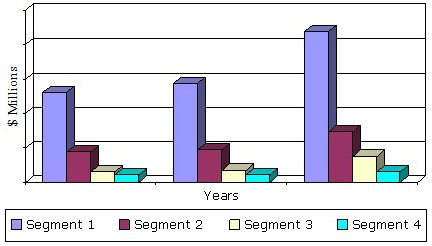U.S. Market for Green Building Materials will Expand to $69 Billion
Wellesley, Mass., June 3, 2015 – The market for green building materials has seen rapid growth in recent years. As of Oct. 17, 2014, more than 3.3 billion sq. ft. of building space had been certified by the U.S. Green Building Council’s (USGBC) Leadership in Energy and Environmental Design (LEED) Program.
More than 500 U.S. companies are involved in the production of green building materials and the design and construction of green buildings.
This number is likely to grow rapidly as more building owners and investors become aware of the potential of green building. BCC Research estimates the value of the U.S. green building materials market at nearly $43.8 billion in 2014 amid further growth in the U.S. construction market as the housing market continues its recovery. By 2019, BCC Research expects that the market for green building materials will have grown to nearly $69 billion, a compound annual growth rate (CAGR) of 9.5%.

Background
The man-made environment has significantly impacted the natural environment, human health and the economy. This profound impact has become increasingly noticeable in recent decades. According to the Environmental Protection Agency (EPA), buildings in the U.S. account for:
● 36% of the nation’s total energy use.
● 12% of its potable water consumption.
● 65% of total electricity consumption.
● 30% of the carbon dioxide (greenhouse gas) emissions.
● 30% of waste output (136 million tons, annually).
In addition, a growing body of research has established the connection between indoor air quality (IAQ) and the health of building occupants.
While most of the problems associated with poor IAQ are the result of inadequate ventilation, some are also caused by various types of airborne contaminants or toxins. The presence of some of these contaminants, such as formaldehyde, trace back to the use of certain building materials. Overexposure to formaldehyde may result in nose irritation, sneezing, dry throat, eye irritation, headache and nausea.
Formaldehyde is used extensively in the manufacture of certain building products (e.g., as bonding/laminating agents, adhesives, paper and textile products, and foam insulation) from which formaldehyde gas may be released in the course of normal use.
“Green” or “sustainable” building involves the use of building practices and materials that use resources as efficiently as possible, while constructing healthier, more energy-efficient and environmentally friendly buildings.
One key objective of some green building projects focuses on creating esthetic harmony between a building and its environment. The market for green building materials has seen rapid growth in recent years. As of Oct. 17, 2014, more than 3.3 billion sq. ft. of building space had been certified by the U.S. Green Building Council’s (USGBC) Leadership in Energy and Environmental Design (LEED) Program.
An article in the June 2006 issue of the Harvard Business Review accurately predicted that green construction would become a mainstream technology in the next five to 10 years following its publication. Market growth notably helped drive down the cost of green building products, and building owners had and continue to become increasingly aware of the economic, health and environmental advantages of green building.
The article’s author, Charles Lockwood, went so far as to note that the ultimate impact of green building becoming mainstream will have as profound of an effect on commercial real estate as the invention of central air conditioning in the 1950s and 1960s or elevators in the 19th century. According to the USGBC, as of April 2014, more than 4.3 million people live and work in LEED-certified buildings.
By 2015, McGraw-Hill projects that an estimated 40% to 48% of new nonresidential construction by value will be green, at a total opportunity value of $120 to $145 billion. According to the USGBC, more than 500 U.S. companies, including a number of Fortune 500 companies, are involved in the production of green building materials and the design and construction of green buildings.
However, the housing and commercial construction markets began gradually recovering in 2010 and as of 2014, seem to have made a significant recovery. The market for the green building industry should continue to experience above-average growth rates over the forecast period through 2019 due to increased demand for sustainable building products and the national push toward and adoption of green building practices.
These trends provide an opportunity for both existing players and new entrants into the green building materials market. This BCC Research report analyzes these new developments and their potential impact on industry participants.\“These trends provide an opportunity for both existing players and new entrants into the green building materials market,” says BCC Research analyst Erik Vickstrom.
“Softwood framing lumber had by far the largest sales of any green building product in 2013, and is expected to remain the leading seller through 2019. Oriented strand board structural sheathing made up the second-largest selling product category in 2013, and it is expected to remain in this position through 2019.”
The U.S. Market for Green Building Materials(ENV007C) provides detailed analysis of green building technologies with the greatest commercial potential over the next 5 year period. The report estimates the potential U.S. markets for green building technologies and analyzes the technical, commercial, and other prerequisites of success in these markets.
Manufacturers and distributors of green building materials and other technologies will gain understanding of technical, economic, and other factors that will influence the ability of different green building technologies to compete for a share of their respective market(s).



